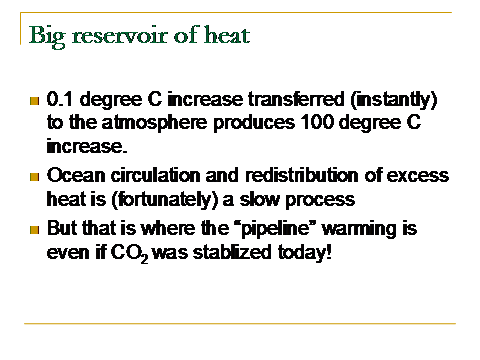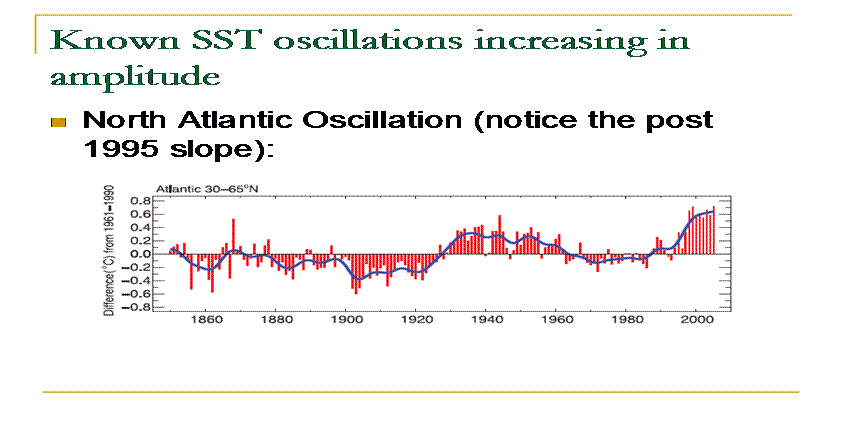Other Indicators of Climate Change

In addition to the temperature data, there are many other potential indicators of climate change, including:
- Sea
Ice
- Glacial retreats and glacial mass balance
- Permafrost
- Droughts
- Sea surface temperature anomalies
The recently released 2007 data on Arctic ice loss is cause for real concern as it marks a significant departure from the linear trend defined by the bulk of the data.
The new trajectory suggests Arctic ice will disappear in September 2013 - expect this to be a big boon for the Cruise Ship Industry!

Worse case scenario ![]() The rapid loss
of Arctic sea ice will speed up the disintegration of the Greenland ice sheet,
and a rise in sea levels by even as much as 5 meters by the turn of this
century is possible.
The rapid loss
of Arctic sea ice will speed up the disintegration of the Greenland ice sheet,
and a rise in sea levels by even as much as 5 meters by the turn of this
century is possible.
Moreover, albedo changes (overall reflectivity of the Earth) is a fundamental component of the Earth's energy balance with respect to incoming solar radiation. Changes in ice composition produce large changes in albedo:

This is a potential disaster!
It is also well documented that glaciers are in worldwide retreat:



(1941 vs. 2005)
While such before and after pictures are dramatic, the real science is in the measure of the glacial mass balance which is best depicted in the right panel below: Only Europe is maintaining its overall glacial mass balance, but in Alaska, the mass balance (basically measuring the amount of ice) is in rapid decline:
In addition, the total permafrost mass balance shows recent large declines:

One of the lesser publicized climate change indicators, but one which has the most direct interaction with the human sphere, is drought. Here is a plot of the Palmer Drought Index as measured, worldwide, since 1900. One clearly sees that beginning around 1980, the world is in a drought regime that it has not seen before:

The spatial distribution of this drought is shown below:

Finally, we need to properly recognize the role of the oceans in all of this:


The slow steady absorption of extra heat by the oceans is directly causing the rise of sea level due strictly to the thermal expansion of the water. The figure below shows sea level measured at San Francisco – note also the frequent El Nino periods of warm water and temporary further expansion above the slowly increasing baseline:

This excess energy absorbed by the oceans is leading to a strengthening of various decadal oscillations in ocean sea surface temperature and in turn that will produce a more volatile climate.

